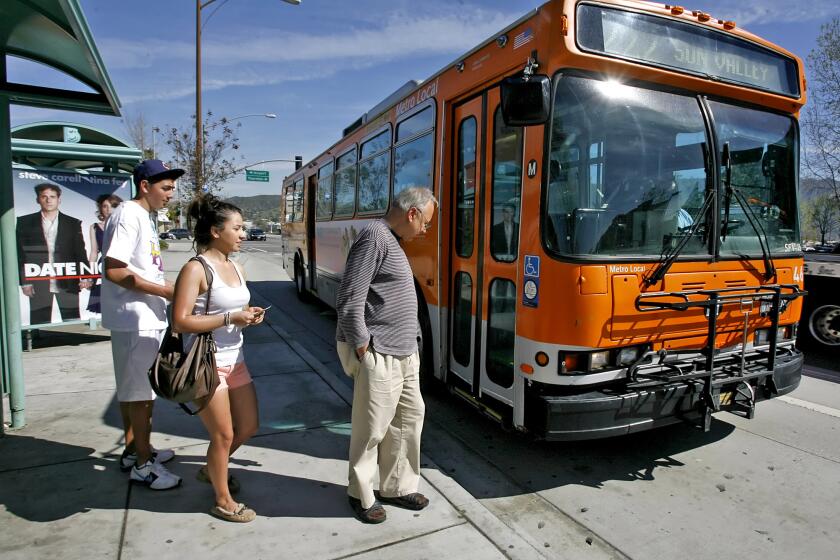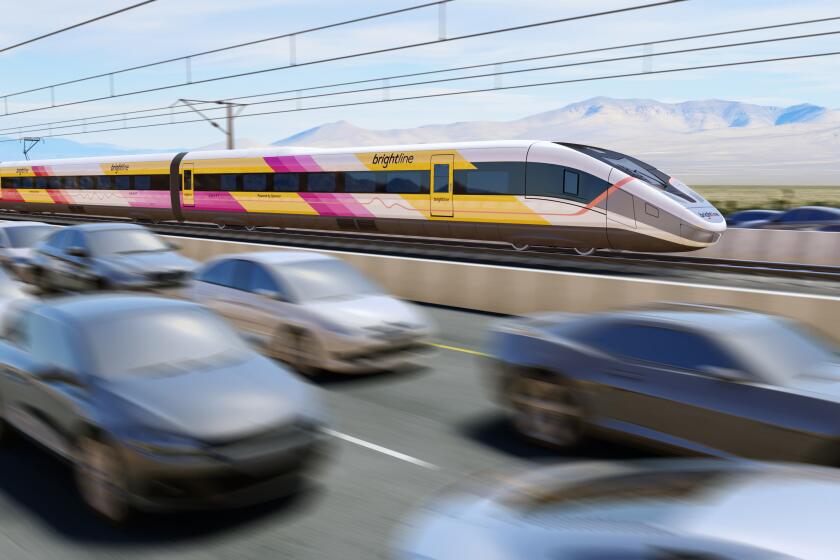NEWS ANALYSIS : Railroads in Midst of a Resurgence : Transportation: The strike comes even as the industry is clawing back to profitability after decades of losing ground to trucking.
The railroad industry appears to resemble a train wreck.
This week, the railroads and their customers suffered the second nationwide shutdown in 15 months. During the same period, the industry wrote off hundreds of millions of dollars in anticipation of severance payoffs, and management-labor relations sunk to new lows.
But, believe it or not, the industry may be speeding ahead toward a promising recovery as part of what many transportation analysts describe as a railroad renaissance.
Massive investment in equipment, aggressive new management and deep reductions in labor costs have left many railroads in better shape to compete against trucking and other forms of transportation, after decades of losing ground.
“They are really at the beginning of turning their operations around,” said industry analyst Anthony Hatch at PaineWebber. “There is a new sense of vigor.”
Railroad profits are expected to soar from last year’s depressed levels as key customers such as the auto and coal industries rebound from the recession. But the industry will benefit most from changes initiated in the last decade.
The railroads began to slowly shed their old ways after the federal government deregulated the transportation industry--from railroads to airlines--in the late 1970s and early ‘80s.
“The competition comes down to the railroads and the trucks,” said Harold Sirkin, a transportation specialist at Boston Consulting Group. “What has been going on for a long time is that trucking has been picking up the railroads’ share” of business.
Since the mid-1980s, however, aggressive managers--some from outside the industry--have taken over as engineers of some of the nation’s largest railroads. A former airline executive became chairman at Burlington Northern--the nation’s largest railroad--and a respected manufacturing manager orchestrated a dramatic turnaround at Union Pacific, now regarded as one of the industry’s most innovative railroads.
The new managers inherited some of the most tradition-bound companies in America. Some of the key changes sought by the railroads involve labor rules that date to the turn of the century, when trains took an entire day to cover 100 miles.
But work rules were not the only vestiges of the old railroads. Investment in new engines, tracks, rail cars and high technology lagged as the railroads diversified into real estate development and energy. Even more damaging was an arrogance and even contempt of customers and their needs. Trains were routinely late, for example.
As a result, manufacturers of high-priced products--such as luxury cars and computers--turned increasingly to trucks for more expensive but more dependable service.
Over the last five years, however, the industry has begun to turn the tide by changing the way it operates.
In many cases, the railroads have competed with trucks by joining forces. Containers that can ride on oceangoing ships, trucks and trains have been a growing source of business for the railroads.
But the most lucrative and controversial changes have involved a series of railroad labor contracts. Last year, Congress stopped a 19-hour-long nationwide rail strike and forced the unions to accept conditions they had fought vigorously for years.
“The big question is can railroad unions and managements pull together to help themselves in the long term to compete against other forms of transportation?” asked Sirkin at the Boston Consulting Group.
“Their competition is the truck--not each other.”
MAIN STORY: A1
Railroad Revenues
The railroads’ operating revenues have climbed steadily in recent years.
In billions of dollars
Source: Assn. of American Railroads
More to Read
Start your day right
Sign up for Essential California for news, features and recommendations from the L.A. Times and beyond in your inbox six days a week.
You may occasionally receive promotional content from the Los Angeles Times.





